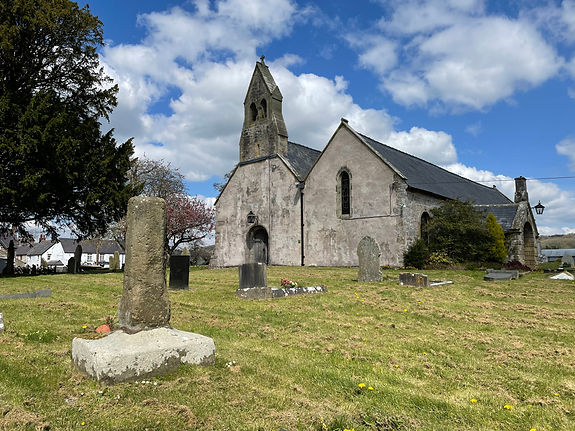
‘Mae yr Awr yn dyfod’
As with many churchyard crosses, at St Garmon’s in the wonderful village of Llanarmon-yn-Ial, the remaining stump of the cross shaft was turned into a sundial. One wonders as to the thinking. Could these communities not quite remove from their presence all trace of these once florid examples of a Catholic faith? Did they need something to remind them of a more religiously ostentatious past? One wonders.
It is thought that the cross was reborn as a sundial in 1774, and once owned a brass plate with the inscription you see quoted above - quite apt, I’m sure you’ll agree. It has been lost, but was seen, much worn and weathered by Elias Owen at the end of the 19th century. It is from his efforts to decipher the inscription that we are aware that a plate existed at all.

As an early clas settlement, and a centre of pilgrimage Llanarmon was a settlement of some considerable importance - a churchyard cross of some stature seems assured. As you stand before the stump to the south west of the church, it is worth mentally tootling an impression of what was. I imagine something huge and quite beautiful. Something astonishing. I imagine reconfiguring an immensity from the worn little stump, just 3ft 5’ inches high, now, mortared into its base stone. It isn’t that hard to conjure up such an image, even if there is little to go on. How much is needed?
It is curious that the Royal Commission, on their visit at the beginning of the 20th century, seemed to completely disregard the fact that this was once a churchyard cross. To read their entry, it seems shockingly dismissive, given the importance of Llanarmon-yn-Ial.
‘On the south side are the remains of the old dial.’
RCAHMC, Ancient and Historical Monuments: Denbigh, p.84
One imagines a group of thirsty commissioners sat outside the nearby Raven Inn and glancing over at the churchyard, making to lurch up from the bench at the sight of the forlorn little stump, before collapsing back with a sigh - thirsty work, these visits.
Further Reading
Elias Owen, Old Stone Crosses of the Vale of Clwyd, London and Oswestry, (1886)
RCAHMC, An Inventory of the Ancient Monuments in Wales: Denbighshire, London (1912)

